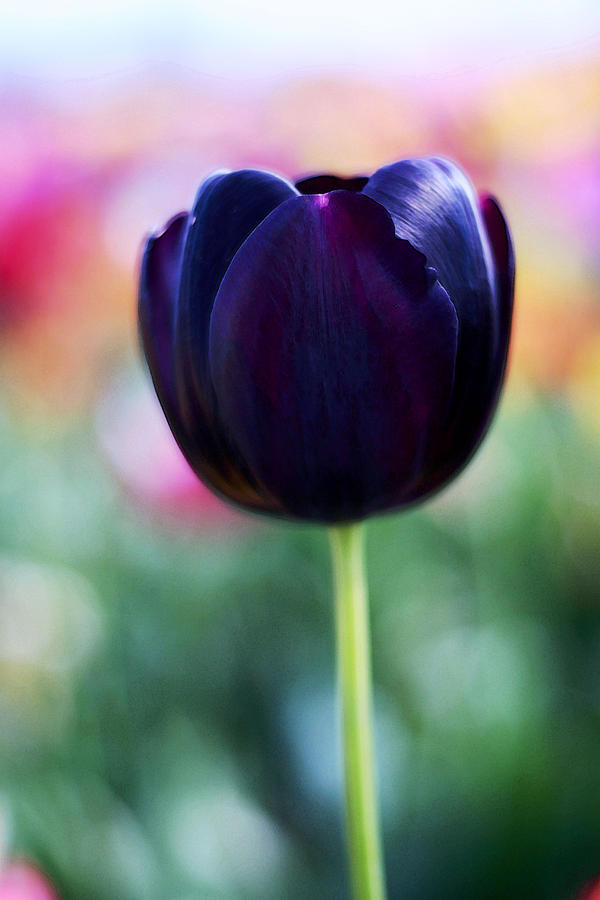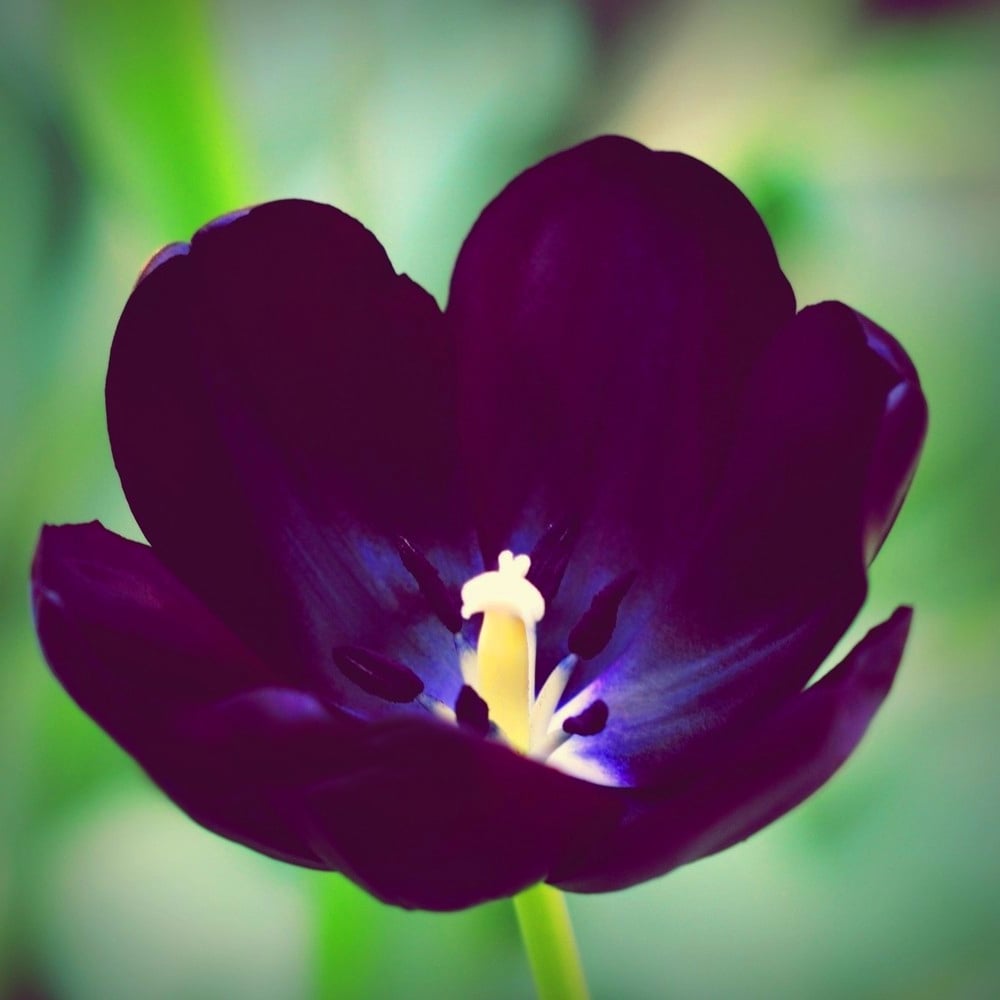How do flowers attract bees? Well, you might have thought of their bright, colourful petals or their delightful scent, but there’s something else that is not that obvious. If you have looked carefully at certain flowers, like the Queen of the Night tulip, and noticed a certain blue hue when switching to different angles, you’ve got it – but what is it?

Queen of the Night Tulipa. source: Fine Art America

another beautiful tulip, source: Gardener’s Dream
This blue results from diffraction of light by microscopic ridges found in the cuticle (outer filmy layer covering the outer skin layer) of petals, researchers at the University of Cambridge found. Blue pigments, for unknown reasons, are hard to make naturally. The researchers, led by Professor Beverley Glover, found that distantly related flower species with different anatomies had surprisingly similar ridges of similar height, width, and spacing – a phenomenon of convergent evolution. The ridges run across the petal cuticles, parallel to each other, but were not perfectly shaped like artificial diffraction gratings. They scatter light and generate a blue halo only visible at a plane perpendicular to the direction of ridges, which is easily missed by humans.
To confirm what the blue halo does, researchers made artificial “flowers” with the ridges of either with perfect, artificial dimensions or simulating a natural messy-ness, and flowers with smooth surfaces, on underlying colour pigments – yellow, blue, or black – placed next to a sugar solution. The flowers with smooth surfaces appeared the same no matter the viewing angle, but those with microscopic ridges, perfect or messy, were iridescent – changing colour as viewing angle changes; but only those with disordered ridges have the blue halo. They found that bees found the iridescent flowers faster than the smooth-surfaced flowers with the same underlying pigment. The effect is reduced in blue-coloured flowers, likely because the blue halo and blue pigment appear quite the same.

Artificial “flowers” made on underlying black background. Sm= smooth surface, Di= surface with disordered diffraction ridges, and Or= ordered, regularly repeating ridges. Adapted from Figure 4 in “Disorder in convergent floral nanostructures enhances signalling to bees”.
So, why do bees like blue? Previous research has shown that bees, with more sensitive receptors to the blue-ultraviolet region of light, are more attracted to the shorter wavelengths of visible light, and blue flowers were found to produce more nectar. Interestingly, the appearance of neat ridges in two major classes of flowers, monocots and eudicots, coincided with the appearance of nectar-gathering insects, increasing the evidence of the blue halo attracting bees to flowers. Knowing how colour affect bees could help beekeeping and possibly increase pollination effects of a flower, if these ridged structures can be coated onto flower petal surfaces without harming them.
What about the flowers that do not have the microscopic ridges? Although blue is difficult to generate, it turns out flowers have a few ways to make blue: increasing the pH of vacuoles, the big cellular compartment that stores nutrients, ions, and pigments, or by making “metal-pigment complexes that blue-shift” the colour of anthocyanin, a pigment that is purple in neutral pH solutions, as the original research article states.
All in all, what I take away from this is: don’t judge a flower by its colour.
